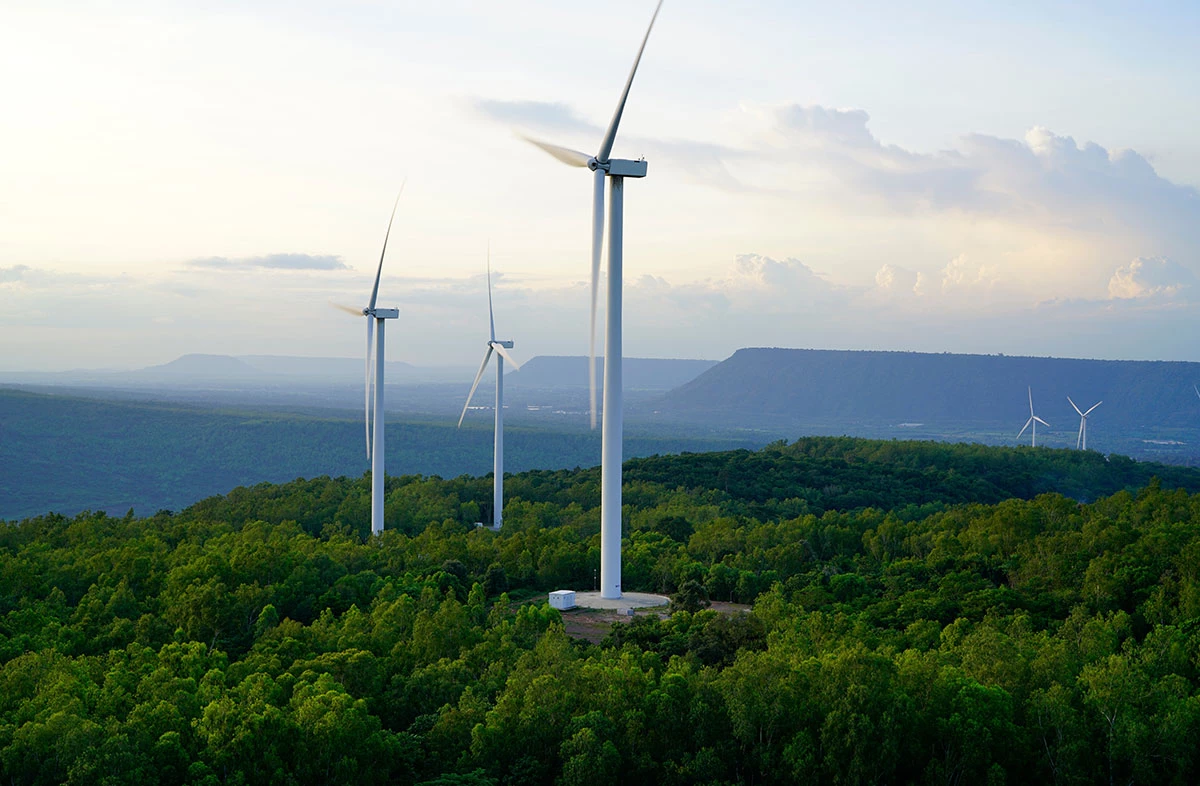Bhutan Studying Green Financing for $23 Billion Hydropower Plan
(Bloomberg) -- Bhutan is studying plans to fund a potential $22.5 billion buildout of hydropower generation capacity with a mix of blended finance and green bonds, as the Himalayan nation seeks to revive its floundering economy.
Nestled between India and China, the nation of less than 800,000 people wants to add a further 15 gigawatts of hydro capacity by 2040, said Ujjwal Deep Dahal, chief executive officer at Druk Holding and Investments Ltd., Bhutan’s sovereign wealth fund, and which controls the country’s only power generation utility.
Hydropower is Bhutan’s primary source of electricity generation and a driver of export earnings. The nation has existing capacity of about 2.4 gigawatts and an additional 3.1 gigawatts already under construction. Further developments would be in addition to those projects.
The plan to rapidly boost the hydro sector is part of Bhutan’s efforts to lure foreign investments to rejuvenate a faltering economy that’s been challenged by high unemployment and weak growth. Officials have wider aspirations of developing a sprawling 1,000-square-kilometer (386 square miles) technology and finance hub where it’s seeking to attract data center investments and bolster job creation.
Given the scale of the proposed hydro expansion, Bhutan needs to consider financial instruments that the country hasn’t used before, Dahal said. “Until now we have gone very simplistic with debt from banks and financial institutions,” he said in a video call. “The classical mode of financing will not work.”
The country, which has mostly met its financing needs through a combination of concessional loans and grants from long-time allies such as India, recently saw a flurry of investment interest from entities including the Adani Group, Anil Ambani’s Reliance Group and the OPEC Fund for International Development to develop clean power projects.
Bhutan currently exports most of its surplus energy to India, though the nation is yet to fully exploit its enormous hydro potential, according to Dahal. According to the nation’s own estimates, it can host as much as 33 gigawatts of generation capacity.
Still, hydro projects in the nation have been marred by delays in the past, said Kalyani Honrao, an Asia analyst for the Economist Intelligence Unit in Mumbai. Turning to private investors could “add to issues around their debt treatment” as the terms will likely not be as favorable as with the Indian government, she added.
Bhutan wants to work with the World Bank on technical assistance for structuring blended finance deals, Dahal said. The so-called blended finance is a model that uses public sector backstops to attract private investors.
The government is also examining issuing green bonds, though would need to set up the market infrastructure to issue and trade these instruments. Both these instruments would also be considered for financing 5 gigawatts of solar power capacity as well, Dahal said. “We are on a drawing board right now”.
©2024 Bloomberg L.P.
KEEPING THE ENERGY INDUSTRY CONNECTED
Subscribe to our newsletter and get the best of Energy Connects directly to your inbox each week.
By subscribing, you agree to the processing of your personal data by dmg events as described in the Privacy Policy.
More renewables news

New Jersey Fire on Track to Be State’s Largest in 18 Years

US Green Steel Startup Raises $129 Million Amid Trump Tariff Uncertainty

Musk Foundation-Backed XPRIZE Awards $100 Million for Carbon Removal

Nissan Commits Another $1.4 Billion to China With EVs in Focus

NextEra Energy reports 9% rise in adjusted earnings for Q1 2025 as solar and storage backlog grows

US Imposes Tariffs Up to 3,521% on Asian Solar Imports

India Battery-Swapping Boom Hinges on Deliveries and Rickshaws

China Reining In Smart Driving Tech Weeks After Fatal Crash

Japan Embraces Lab-Made Fuels Despite Costs, Climate Concerns
















